Seasons > Autumn > Home Decorations > Center Pieces and Place Settings

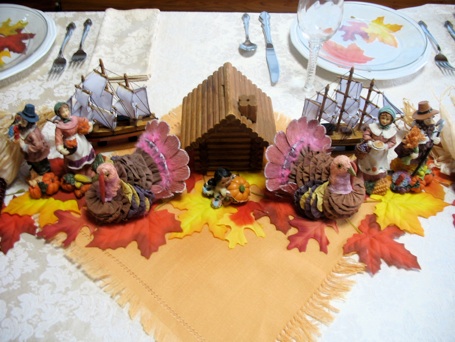

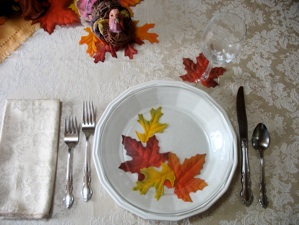

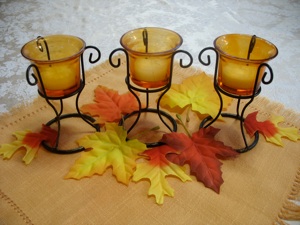
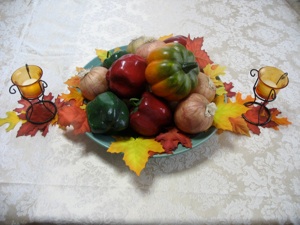

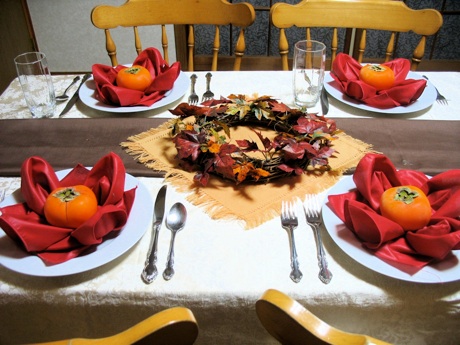
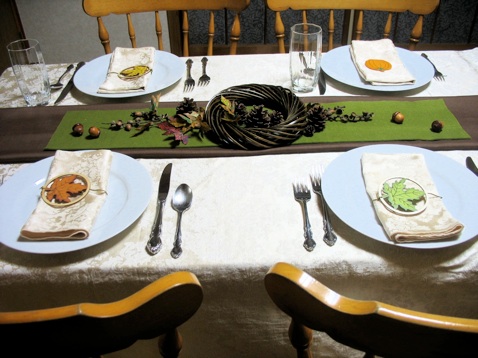
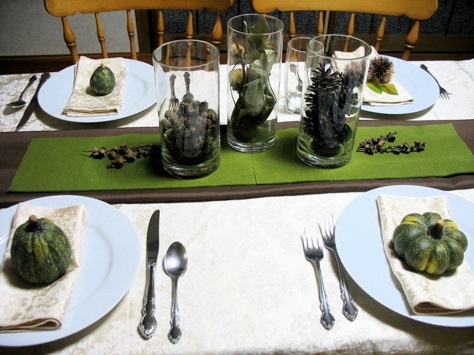


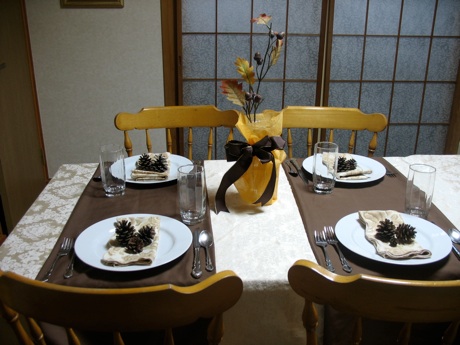
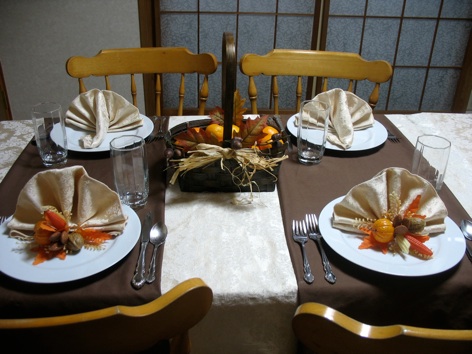
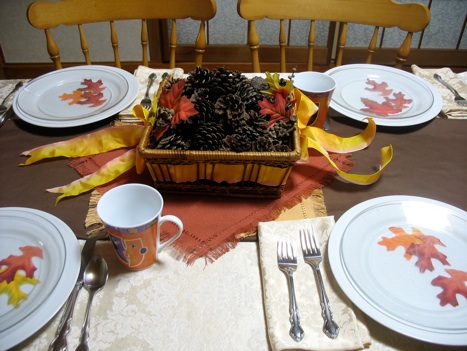
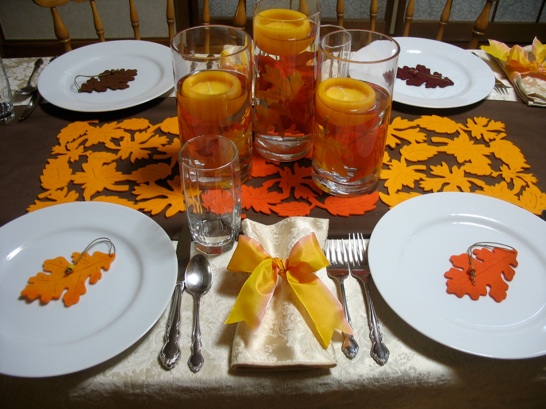
This table setting has many layers. An off white tablecloth goes on the table first. Next comes a brown table runner. On top of that are 3 orange mats with a leaf motif. Then come 3 vases filled with water and “silk” leaves, and each is topped with a floating candle. The felt leaves on the plates could be used for coasters, or as place cards, or simply as a decorative element. All of these items, including the plates, were purchased at 100 yen stores, the only exceptions being the table cloth and silverware.
Here, again, table linens are layered to produce a more interesting arrangement. A simple basket of pine cones is enhanced with a brown table runner and 2 orange napkins layered under them. Fall leaves are sandwiched under clear glass plates creating a fall motif for your dinner plates. That way you don’t have to buy seasonal plates, or find a place to store those extra dishes, or spend money to buy paper plates for every special occasion.
This time the brown table runners go across the table and also act as place mats. The basket is accented with a raffia bow and oak leaves with acorns, and is piled high with oranges. Each plate is topped with a napkin and accented with a floral pick (hundred yen stores as well as department stores sell these in the fall.)
For more muted colors, wrap a vase or bottle in orange paper or cloth and tie with a brown ribbon. Fill with flowers, or a branch of Oak leaves and acorns. The napkins have been accented with pine cones. Hundred yen stores sometimes sell pine cones, but you can pick them up for free, if you know where pine trees grow.
For added interest, layer earth-tone place mats on top of the brown table runners. The vases return for an encore, but this time they are dry--filled with pine cones, acorn caps, and sugar gum balls. The decorative element on the napkins are chestnuts from the hundred yen store.
You can see how changing just one color can give a totally different look to the table. Here, moss green felt is layered on top of the brown table runner. The pumpkins and squash on the plates could be real ones, but these are ceramic ones from the hundred yen store.
A similar look can be achieved with very different items. Instead of the vases, a wreath accented with leaves, pine cones and acorns becomes the centerpiece. Wooden leaf shapes become napkin rings (from the hundred yen store, of course.)
A wreath is just about the easiest centerpiece there is. This one a a hundred yen vine wreath with hundred yen “silk” leaves glued onto it. It is layered on top of an orange napkin and brown table runner for added interest. Each plate has a folded red napkin with a fresh persimmon in the center.
The next easiest centerpiece is to get a basket and pile it high with fresh fruits or vegetables. It will not last long in a warm house, so this is a centerpiece that is only good for a day or two. It is layered on top of a brown table runner with a ribbon and felt leaves. Each napkin is tied with more ribbon, and accented with more felt leaves.
Seasons > Autumn > Home Decorations > Center Pieces and Place Settings
More centerpiece ideas from the hundred yen store: An orange glass candle stand that holds a tea light is the perfect color, but would look too sparse if you only use one. However, if you line up 3 in a row, add some leaves and place them all on a napkin, it becomes a quick, inexpensive centerpiece
Pile a bowl or platter high with vegetables and pumpkins, with a few leaves for accents. If you use real ones, and want to leave it up for some time, keep checking them to make sure none of them spoil. Or, buy fake ones at the hundred yen store, and you don’t have to worry about checking them every day.
This ceramic pumpkin is too small to use by itself, but if you add leaves and layer it on a napkin, it will work. For a more interesting arrangement, add even more elements. See below
These centerpieces are for an American Thanksgiving dinner. The cornhusk doll, that my daughter made when she was in elementary school, is meant to represent the first pilgrims who settled America. it gives height to the middle of the arrangement. The Indian corn represents the Indians who taught the pilgrims how to plant corn, and kept them from starving.
A similar arrangement is achieved with dollar store figureines. The ships represent the Mayflower that brought the pilgrims to America, The turkeys and pumpkins represent the bounty of food for which the pilgrims gave thanks, and became the foods that have come to be associated with modern Thanksgiving dinners.


